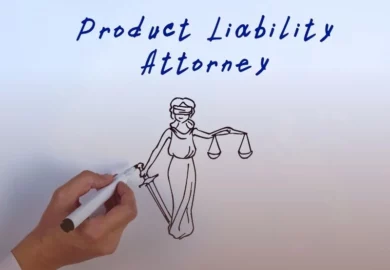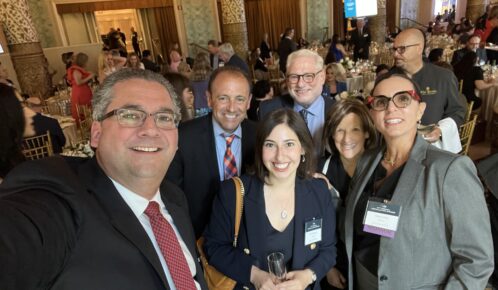A product liability case arises when a defective or unreasonably dangerous product causes a person harm. You may have a product liability claim if you suffered an injury or your loved one was killed because of a defective product.
Table of Contents

What Is the Definition of Product Liability in Illinois?
Product liability refers to the legal responsibility of manufacturers, distributors, suppliers, and retailers for injuries caused by defective or unsafe products they place into the hands of consumers.
This legal concept holds these parties accountable for any harm or damages resulting from defects in design, manufacturing, labeling, or marketing of a product. In essence, product liability laws aim to protect consumers from harm caused by dangerous or defective products by holding those responsible accountable for the damages incurred.
What is an unreasonably dangerous product? An unreasonably dangerous product is one that poses harm to users, even when used as intended.
What Are the Type of Product Defects?
There are three types of product defects that can give rise to a product liability case.
Design Defects
A design flaw is a defect that lies in a pre-production stage. The fault is not in the manufacturing process, as the end product was manufactured according to the initial design, but in the design itself. As such, it affects every product produced following this design.
For example, let’s say you buy a multipurpose pocket knife with a quick-release mechanism activated by a button. This button allows you to quickly release and use the knife.
However, the way the knife was designed was such that the button responds to minimal input. In other words, due to the minimal input required to activate the mechanism and the location of the quick-release button, the consumer might be using the pocket knife’s corkscrew feature to open a bottle and unintentionally activate the quick release button.
Manufacturing Defects
The second type of defect is a manufacturing defect. In this scenario, the product deviates from the intended design, often due to errors or lack of quality control in the manufacturing process.
For example, perhaps the pocket knife has a locking mechanism that locks the knife in place when open so it doesn’t close on the user’s finger. However, due to a faulty locking mechanism, the blade closed onto the user’s finger and cut it off.
Marketing Defects
Finally, the last type of defect is a marketing defect, or failure to warn. For example, let’s say you bought a coffee machine that gets very hot at the top when heating coffee due to an internal heating filament.
However, the marketing material and user manual make no mention that the top part of the machine can get very hot. With a proper warning, the user would know not to touch that area while the coffee is brewing.
Another example of a marketing defect is an exfoliation product that uses harsh chemicals to peel away dead skin cells. However, if too much of the product is used at once, it could cause chemical burns. The product manufacturer should have added a warning outlining how much of the product is safe to use at once and how often to use the product.
When Do You Have a Product Liability Case in Illinois?
You may have a product liability case if you used a product as intended and still suffered an injury due to a design, manufacturing, or marketing defect. A product liability lawyer can help you determine if you have a product liability case, but here are some things to consider.
How Do You Establish a Legal Basis for a Product Liability Case?
Establishing a legal basis for a product liability case typically involves proving several key elements:
Defective Product: You must demonstrate that the product in question was defective in some way, such as in its design, manufacturing, or marketing.
Injury or Damage: You need to show that the defect caused injury or damage to the plaintiff or their property.
Causation: There must be a clear link between the defect and the injury or damage suffered by the plaintiff.
Use as Intended: The product must have been used as intended or in a reasonably foreseeable manner when the injury occurred.
Failure to Warn: In cases involving inadequate warnings or instructions, you may need to demonstrate that the defendant failed to provide sufficient warnings about the product’s potential risks.
Strict Liability or Negligence: Depending on the case, you may need to establish strict liability (where the defendant is held responsible regardless of fault) or negligence (where the defendant’s actions fell below the standard of care expected).
To establish these elements, you may need to gather evidence such as product testing results, expert testimony, medical records, documentation of the defect, and any available documentation regarding prior incidents or warnings related to the product.
What Is Strict Liability vs. Negligence?
Strict liability and negligence are two theories under which manufacturers or traders may be responsible for product defects, considering all relevant Illinois product liability laws have been met. The theories differ in various ways.
Strict Liability
Under the strict liability theory, the manufacturer could be held responsible for or harm caused by their actions or products, regardless of their level of care or intent. The plaintiff does not need to prove that the defendant acted negligently. Instead, victims only need to demonstrate that the harm occurred as a result of the defendant’s actions or product. Strict liability is often applied in cases involving defective products, where the focus is on the product’s condition rather than the defendant’s conduct.
The three conditions for winning a case against a manufacturer under the strict liability theory are:
1. The product is unreasonably dangerous.
2. The defect existed during the manufacturer’s control and did not arise later.
3. Your injury was caused by this defect.
Negligence
Negligence is a fault-based system, meaning that liability is based on the defendant’s failure to exercise reasonable care.
A successful claim based on negligence requires the plaintiff to prove that the defendant breached a duty of care owed to them, resulting in harm or injury. This breach of duty occurs when the defendant fails to act in a manner that a reasonable person would under similar circumstances. To establish negligence, the plaintiff must demonstrate the following elements:
1. A duty of care was owed to the victim
2. There was a breach of duty
3. The breach of duty caused the injuries
4. There were compensable damages
Steps to Take If You Have a Product Liability Case
By following these steps and seeking guidance from an experienced attorney, you can increase your chances of a successful outcome in your product liability case.
Seek Medical Attention
What is the first step when injured by a defective product? Your top priority should be getting medical attention for your injuries. This ensures your well-being and establishes a clear record of the harm you suffered and creates a documented link between the product and your injury.
Secure the Defective Product
If possible, hold onto the defective product that caused your injury. This serves as crucial evidence for your case. Do not modify or dispose of it. Take pictures of the product from various angles, highlighting any visible defects.
Gather Evidence to Support Your Claim
Collect any evidence that supports your claim. This might include:
- Receipts or proof of purchase for the product.
- Witness statements from anyone who saw you using the product or the accident occur.
- Pictures of the accident scene or the defect itself.
- Manuals or instructions that came with the product, especially if warnings seem inadequate.
- Online reviews or complaints from other users about similar issues.
Report the Incident
If the product is a food item, report the incident to the FDA (Food and Drug Administration). For other consumer products, you can report the incident to the CPSC (Consumer Product Safety Commission). While these reports might not directly impact your lawsuit, they can help build a case against the manufacturer by highlighting a pattern of issues.
Consult With a Product Liability Lawyer
The next step is to consult a product liability attorney in Chicago. Going up against a large manufacturer is no easy task.
An experienced product liability attorney can be invaluable in navigating your case. An attorney will evaluate the merits of your claim and advise you on the legal options available, conduct a thorough investigation to gather evidence and build a strong case, deal with insurance companies on your behalf, and represent you in court if necessary.
Why Hire Our Law Firm for Your Product Liability Case?
At Ankin Law in Chicago, we take consumer injuries personally. Our product liability lawyers have over a century of combined experience helping injured consumers like you, and we know what it takes to win a lawsuit against a dangerous product manufacturer. We encourage you to reach out to our legal team for a free, no-obligation case evaluation to find out more about your legal options and how we can help you recover compensation for your losses.



